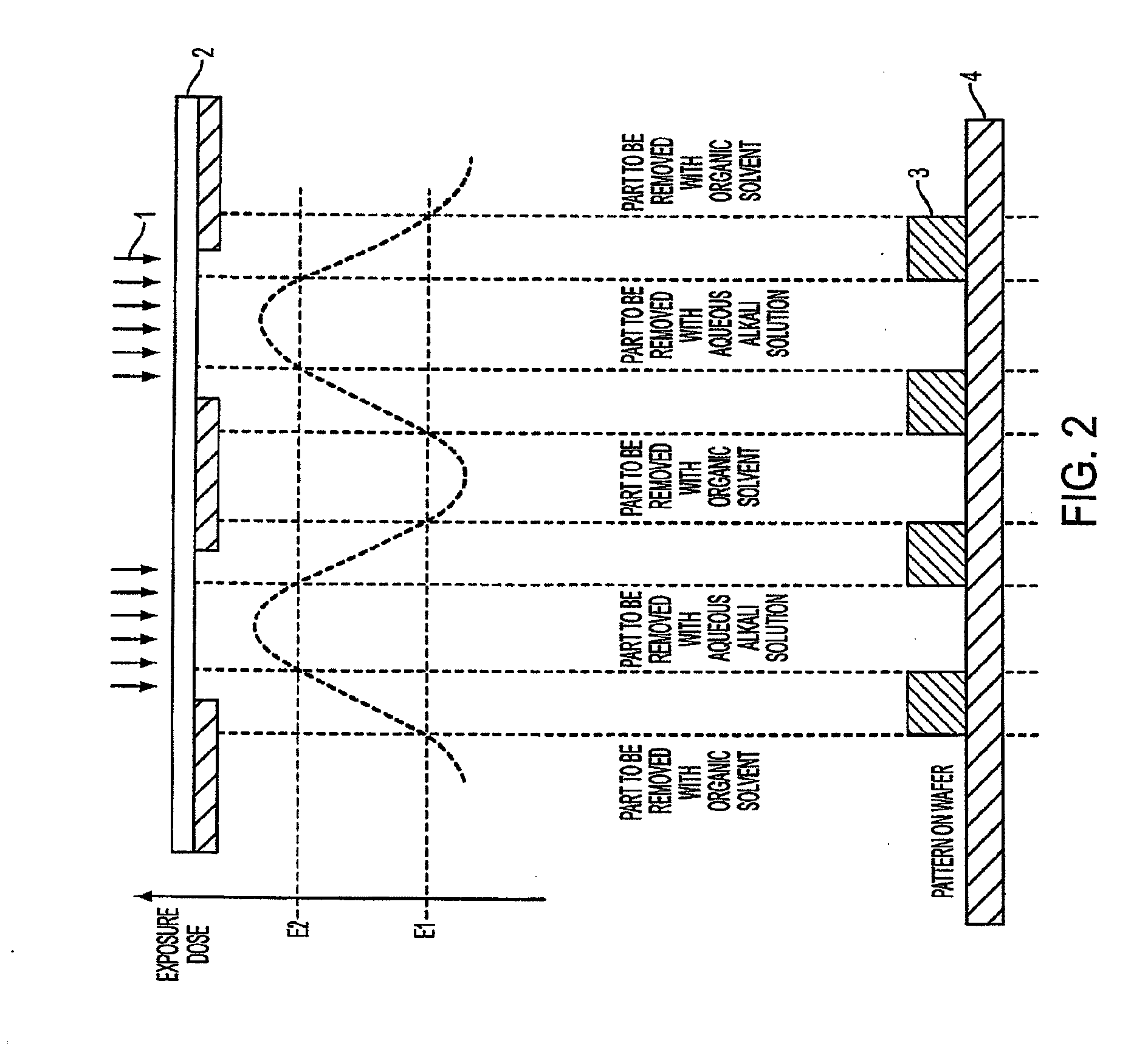Pattern forming method, resist composition to be used in the pattern forming method, negative developing solution to be used in the pattern forming method and rinsing solution for negative development to be used in the pattern forming method
a technology of resist composition and pattern forming method, which is applied in the direction of photomechanical equipment, instruments, photosensitive materials, etc., can solve the problems of reducing optical contrast, unable to achieve sufficient focal depth, and unable to establish sufficient resolution performance, etc., to achieve high degree of integration, high precision and fine pattern, and stable form
- Summary
- Abstract
- Description
- Claims
- Application Information
AI Technical Summary
Benefits of technology
Problems solved by technology
Method used
Image
Examples
synthesis example 1
Synthesis of Resin (A1)
[0542]Into a three necked flask, 20 g of a solvent mixture including propylene glycol monomethyl ether acetate and propylene glycol monomethyl ether at a ratio (by mass) of 6 / 4 was introduced under a nitrogen gas stream and heated to 80° C. (solvent 1). γ-Butyrolactone methacrylate, hydroxyadamantane methacrylate and 2-methyl-2-adamantyl methacrylate were added at a molar ratio of 45 / 15 / 40 to s solvent mixture of propylene glycol monomethyl ether acetate and propylene glycol monomethyl ether at a ratio (by mass) of 6 / 4 to give a 22% by mass monomer solution (200 g). To this solution, 8% by mol of a polymerization initiator V-601 (manufactured by Wako Pure Chemical Industries, Ltd.) was added and dissolved. The resulting solution was dropped for 6 hours into the above solvent 1. After the completion of dropping, the reaction mixture was reacted for additional 2 hours at 80° C. Then, the liquid reaction mixture was cooled by standing and poured into hexane 1800 ...
example 1
[0551]An organic antireflective film ARC29A (manufactured by Nissan Chemical Industries, Ltd.) was coated on a silicon wafer and baked at 205° C. for 60 seconds to thereby form an antireflective film having a thickness of 78 nm. Then the resist composition (A1) was coated thereon and baked at 120° C. for 60 seconds to form a resist film having a thickness of 150 nm. The obtained wafer was subjected to pattern exposure with the use of an ArF excimer laser scanner (NA 0.75). After heating at 120° C. for 60 second, the wafer was subjected to (negative) development by the spray method with the use of butyl acetate (a negative developing solution) for 60 seconds under rotating at a rotational speed of 1000 rpm. Thus, a resist pattern of a 150 nm (1:1) line-and-space was obtained.
example 2
[0552]An organic antireflective film ARC29A (manufactured by Nissan Chemical Industries, Ltd.) was coated on a silicon wafer and baked at 205° C. for 60 seconds to thereby form an antireflective film having a thickness of 78 nm. Then the resist composition (A1) was coated thereon and baked at 120° C. for 60 seconds to form a resist film having a thickness of 150 nm. The obtained wafer was subjected to pattern exposure with the use of an ArF excimer laser scanner (NA 0.75). After heating at 120° C. for 60 second, the wafer was subjected to (negative) development by the spray method with the use of butyl acetate (a negative developing solution) for 60 seconds under rotating at a rotational speed of 1000 rpm. Next, the wafer was rinsed with 1-hexanol for 30 seconds while continuing the rotation. Then, the wafer was rotated at a rotational speed of 4000 rpm for 30 seconds to thereby remove the rinsing solution. Thus, a resist pattern of a 150 nm (1:1) line-and-space was obtained.
PUM
| Property | Measurement | Unit |
|---|---|---|
| vapor pressure | aaaaa | aaaaa |
| vapor pressure | aaaaa | aaaaa |
| wavelength | aaaaa | aaaaa |
Abstract
Description
Claims
Application Information
 Login to View More
Login to View More - R&D
- Intellectual Property
- Life Sciences
- Materials
- Tech Scout
- Unparalleled Data Quality
- Higher Quality Content
- 60% Fewer Hallucinations
Browse by: Latest US Patents, China's latest patents, Technical Efficacy Thesaurus, Application Domain, Technology Topic, Popular Technical Reports.
© 2025 PatSnap. All rights reserved.Legal|Privacy policy|Modern Slavery Act Transparency Statement|Sitemap|About US| Contact US: help@patsnap.com



